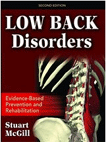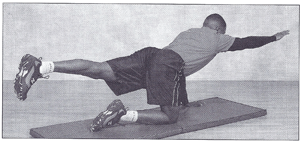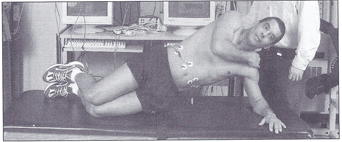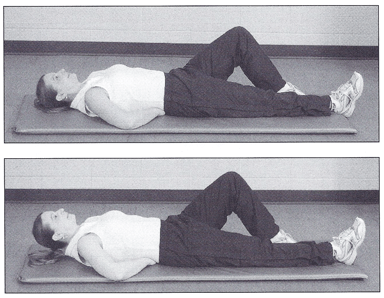Author: Professor Stuart McGill
Reviewer: Bernie Clark, November 13th, 2014
Professor Stuart McGill, head of the Spine Biomechanics Laboratory at the University of Waterloo, created a book, published in 2002 and revised in 2007, on spine biomechanics, injury and treatment for low back problems. It is a textbook filled with valuable information for all yoga teachers. As a textbook, it requires study and the taking of notes to get the full value available. It is not a book you will read from cover to cover in one sitting. But, by digesting a few key chapters slowly, with care, it will inform your yoga practice and make it much safer and effective for your lower back.
created a book, published in 2002 and revised in 2007, on spine biomechanics, injury and treatment for low back problems. It is a textbook filled with valuable information for all yoga teachers. As a textbook, it requires study and the taking of notes to get the full value available. It is not a book you will read from cover to cover in one sitting. But, by digesting a few key chapters slowly, with care, it will inform your yoga practice and make it much safer and effective for your lower back.
The early chapters outline the theory of stress, rest and recovery for spinal problems. Chapters 1, 4, 5 and 6, which include the basics of spinal anatomy, should be read and understood before proceeding to the practical sections of the book. Fortunately, Professor McGill explains the way the spine works in clear, non-technical terms. Any yoga teacher will be able to understand the concepts of stress, tolerance, rest and recovery. A succinct summary of the cause of injury is given at the end of Chapter 1: “…the injury process may be associated either with very high loads or with relatively low loads that are repeated or sustained.” Basically, if we move the spine while under load or through repetitive movements, we risk injury. He then points out “… exposure to load is necessary, but in the process of accumulation of microtrauma, the applied loads must be removed (with rest) to allow the healing and adaptation process to gradually increase the failure tolerance to a higher level.” These concepts are illustrated in a few key graphics which are repeated in my article describing a weekend with Stuart McGill.
Part II of the book, containing chapters 7 to 9, are more of interest to yoga therapists who wish to learn how to assess individual students, to understand who is at risk of low back injuries and how to reduce those risks. It is in Part III, including the final chapters 10 to 13, that we learn how to create a program of exercises that can assist with rehabilitating injured backs or enhancing performance of healthy backs and prevent trauma. It is in this section of the book that we are introduced to the “Big Three” exercises and their modifications that have been proven to be safe and effective at strengthening weakened spines, enhancing already healthy spines and preparing the back for movement under loads. These three exercises can be easily modified and adapted into asana practice. I have already explained how the Side Bridge can be adapted into a yoga practice in my article on a weekend with Professor McGill. The other two exercises in addition to the Side Bridge are the Bird Dog (in yoga we might call this the Balancing Cat) and the Curl-Up, which is the safe way to do a Sit-Up. (The often promoted idea that sit-ups with knees bent is safer than with legs straight has been shown in McGill’s lab to be untrue. Both forms of sit-ups are equally stressful on the lower back and inferior to the Curl-Up option.)
In all three exercises a focus remains on bracing the spine and keeping a neutral shape to the lower back. This is described in more detail in my article under the topic Bracing & Spacing, so I won’t repeat it here. However, the key point is that while we are loading the spine or moving the spine we want it to be stabilized in as close to a neutral shape as possible. All three exercises develop this pattern of movement: we build strength while maintaining stability.
Professor McGill provides plenty of images of the Big Three exercises to help us understand the movements.
1. Bird Dog is the extending of an arm and opposite leg while on all fours;

2. Side Bridge has several simpler and advanced variations;

3. The Curl-Up is a lot harder than it appears when it is done correctly.

(These images are copyright protected by Stuart McGill and
are reproduced here with his kind permission.)
While I am showing the form of the three exercises, it is not advisable for your to do these without first reading his instructions! McGill describes who is able to do which variations safely before going on to describe how to modify these exercises for more capable spines. This review is not intended to be a replacement for reading the book!
Once you have worked through the relevant chapters of Low Back Disorders, you will be forced to review your own intentions. When you work your spine in your asana practice: what do you intend? Are you trying to become healthier or are you trying to reach a particular flexibility goal? These are not the same things. Understanding the difference between health and performance may change your practice significantly. And that may make this the best book on yoga that you will have ever read, despite the fact that yoga is mentioned but once in the whole book.
To purchase Low Back Disorder or any of Stuart McGill’s other books or DVDs, visit his web site at www.backfitpro.com.
